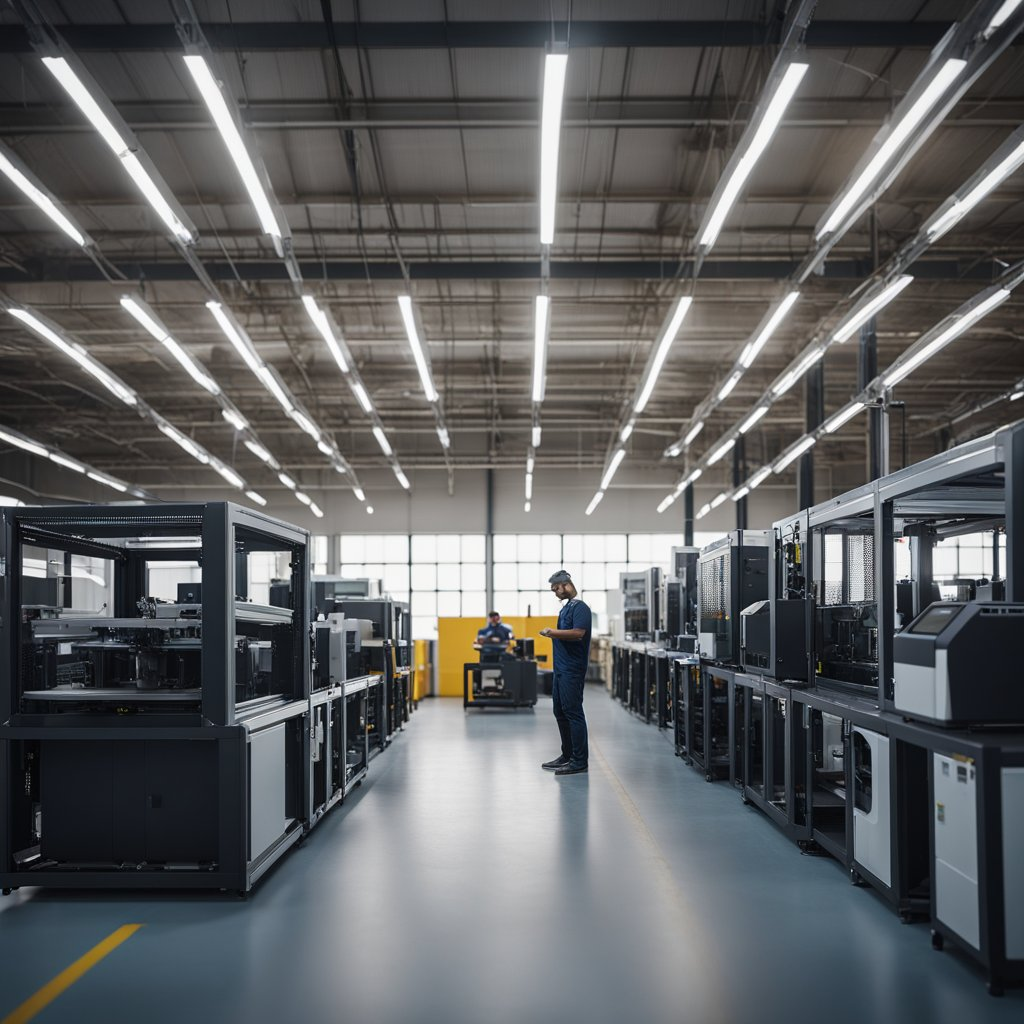
The global supply chain is undergoing rapid transformation, and 3D printing stands at the forefront of this disruption. As we move into 2024, additive manufacturing is reshaping how goods are produced, stored, and distributed. Here’s how 3D printing is playing a pivotal role in streamlining and decentralizing supply chains:
On-Demand Production
One of the most significant shifts in supply chain management is the shift to on-demand production. Traditional manufacturing often relies on mass production and large inventories, leading to increased storage costs and waste. 3D printing eliminates the need for excess stock by enabling companies to produce parts and products as needed. This “just-in-time” production model not only reduces overhead costs but also minimizes the risks associated with overproduction or changes in demand.
With advancements in 3D printing technologies, manufacturers can now produce a wide variety of goods, from automotive components to medical devices, on-site and at the moment they are required. This shift allows for more localized production, meaning fewer goods need to be shipped over long distances, reducing carbon footprints and lead times.
Customization and Flexibility
Customization is another area where 3D printing is making a massive impact. Traditional manufacturing struggles with low-volume or custom orders because of high tooling costs and long setup times. 3D printing, however, allows for easy customization without extra cost or production delays. Businesses can tailor products to specific customer needs quickly, creating a more responsive supply chain.
This flexibility also extends to prototyping. In industries like aerospace, automotive, and fashion, rapid prototyping through 3D printing allows for quicker product iterations, testing, and market adaptation. As a result, companies can introduce new products faster, adapting to shifting consumer demands and trends almost instantly.
Reduction in Logistics and Transport
The decentralization enabled by 3D printing reduces the dependence on global shipping networks. Rather than manufacturing products in one part of the world and shipping them globally, businesses can use 3D printing to produce items closer to the point of demand. This local production model cuts down on shipping times, transportation costs, and the environmental impact of long-haul shipping.
For industries facing supply chain bottlenecks, such as electronics or automotive, the ability to manufacture critical parts on-site offers a huge advantage. 3D printing helps mitigate risks associated with supply chain disruptions, such as port closures, natural disasters, or geopolitical tensions.
Sustainability in the Supply Chain
Sustainability is a growing concern in supply chain management, and 3D printing is helping to address this issue. Traditional manufacturing often involves wasteful processes that generate excess material. In contrast, additive manufacturing is far more efficient, using only the material necessary to create a part or product. This reduction in material waste contributes to more sustainable manufacturing practices.
Additionally, 3D printing opens up new possibilities for recycling materials. For instance, companies can grind up used plastic products and reprocess them into 3D printing filament, creating a circular economy model. This approach not only reduces raw material consumption but also helps companies meet their sustainability targets.
Supply Chain Resilience
The COVID-19 pandemic highlighted the vulnerabilities in global supply chains, with delays, shortages, and high costs becoming widespread. 3D printing offers a solution by enhancing supply chain resilience. In times of crisis, companies can pivot quickly, using 3D printers to produce critical items such as medical supplies, personal protective equipment (PPE), or spare parts for essential machinery.
Moreover, 3D printing allows companies to quickly adapt to new challenges, offering the flexibility to shift production depending on immediate needs, further insulating supply chains from global disruptions.
Challenges and Future Outlook
While 3D printing offers a host of benefits for supply chains, it’s not without its challenges. The technology is still developing, and while costs have come down significantly, they remain prohibitive for some applications. Additionally, material limitations and print speeds continue to be areas for improvement. However, as innovation in 3D printing accelerates, we can expect these challenges to diminish over time.
Looking to the future, as 3D printing technology becomes more advanced and widespread, we will likely see a continued shift toward distributed manufacturing networks, where production occurs locally and on-demand. This will further revolutionize supply chain logistics, making them more resilient, flexible, and sustainable.
Conclusion
3D printing is poised to disrupt traditional supply chains by decentralizing production, enabling customization, reducing logistics costs, and promoting sustainability. As more industries adopt this technology in 2024 and beyond, we can expect to see leaner, more efficient supply chains that are better equipped to handle the demands of a rapidly changing global market.
Sources
https://thebossmagazine.com/3d-printing-impact-on-the-supply-chain
https://supplychaindigital.com/technology/supply-chain-disruption-driving-3d-printing-tech
Discover more from PrintCraft.gr
Subscribe to get the latest posts sent to your email.